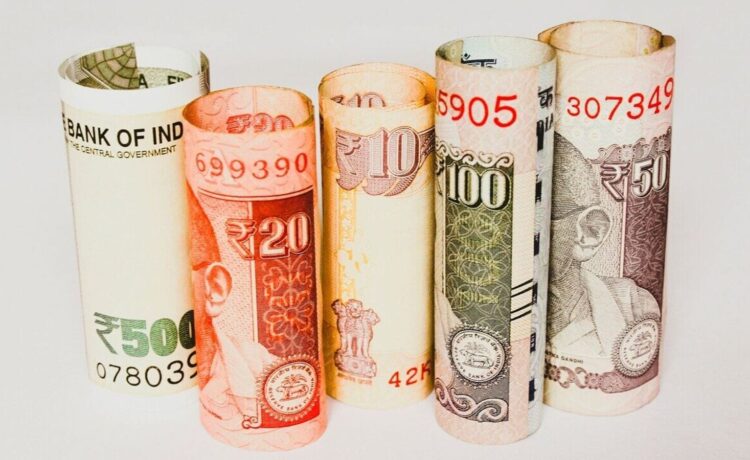Trump tariffs impact: The Indian Rupee has emerged as the worst-performing Asian year-to-date (YTD) against a stronger US dollar after US President Donald Trump‘s tariff policies rattled global markets. A bearish bias prevailed on the currency, with traders positioning for a potential interest rate cut by the Reserve Bank of India (RBI)’s monetary policy committee (MPC) this week.
The domestic currency declined past the 87 mark and has depreciated over two per cent so far in 2025. It is the worst performer among major Asian currencies this year. Persistent foreign outflows, uncertainty surrounding US trade tariffs, and expectations of domestic rate cuts have weighed the domestic unit.
INR vs USD Today: Rupee sinks to lifetime low on RBI rate cuts bets
The rupee plunged 36 paise to close at an all-time low of 87.43 against the US dollar on Wednesday, February 5, after global trade war concerns fuelled risk aversion among investors. According to forex traders, the rupee is trading with a negative bias over the global trade war after market participants mulled the impact of trade tariffs policies being imposed by the US and China.
Moreover, the RBI’s interest rate cut concerns, and the broad strength of the American currency in the overseas market dented investor sentiments further. At the interbank foreign exchange, the rupee opened on a weak note at 87.13 and touched an intraday low of 87.49 against the American currency during the session.
The local unit finally settled at a record closing low of 87.43, 36 paise lower than its previous close. On Tuesday, it recovered four paise from its all-time low level to close at 87.07 against the US dollar. Anuj Choudhary – Research Analyst at Mirae Asset Sharekhan, said the the domestic currency touched a fresh all-time low on rising odds of a rate cut by the RBI in its MPC meeting.
Also Read: Is RBI poised to cut repo rate for first time in five years under new Governor Sanjay Malhotra?
Trump is pressing ahead with a 10 per cent tariff on US companies importing things from China. On Tuesday, China retaliated by announcing its own tariffs on some US products and an antitrust probe into Google. The US dollar index, which gauges the greenback’s strength against a basket of six currencies, was trading 0.35 per cent lower at 107.58.
“Despite the dollar index easing below 108 in recent days, rupee weakness persisted due to trade uncertainty and continued FII outflows,” said Jateen Trivedi, VP Research Analyst – Commodity and Currency, LKP Securities.
“Going forward, the rupee is expected to weaken towards 87.75, with any pullback facing resistance near 87.15. Market participants will closely watch further tariff escalations and their impact on global risk sentiment,” he added.
The central bank’s MPC, the central rate-setting panel, began its three-day meeting on Wednesday. The MPC will announce its policy decisions on February 7. D-Street expects a 25 basis-point cut in benchmark policy rates.
This will be RBI’s first rate cut in five years, as inflation remains within the central bank’s comfort zone. The central bank had last reduced the repo rate by 40 basis points to four per cent in May 2020 to help the economy tide over the crisis following the outbreak of the Covid pandemic and subsequent lockdown.
Rupee emerges worst-performing Asian currency on Trump tariffs
Asian currencies slumped after the US dollar rallied on Trump’s sweeping tariffs, which impose a 25 per cent levy on Mexican and Canadian imports into the US, while those from China will attract a 10 per cent charge.
While intermittent dollar sales from state-run banks helped limit the rupee’s decline, the absence of stern intervention by the central bank was seen by many traders as an affirmation that it was allowing the rupee to move in line with its peers.
Amid persistent headwinds and expectations of the central bank easing its grip, the rupee’s one-month implied volatility has averaged about 3.5 per cent so far in 2025, up from the average of two per cent last year. The developments around US tariffs is expected to dominate cues for currency markets this week.
Moody’s Ratings said the Indian rupee has depreciated by around five per cent in the last two years and has fallen by 20 per cent in the last five years, making it one of the weakest performing currencies in South and South East Asia. Of the 23 rated Indian companies, Moody’s assessed only six to be exposed to the effects of dollar strength, but these companies have sufficient mitigating factors.
These companies are the three oil refining and marketing companies (OMCs), Bharat Petroleum Corporation (BPCL), Hindustan Petroleum Corporation (HPCL), and Indian Oil Corporation (IOCL), building materials producer UltraTech Cement, Bharti Airtel, and ride-sharing company ANI Technologies Pvt Ltd.
“While the rupee has depreciated by only around five per cent in the last two years, it has fallen over 20 per cent since January 2020, making it one of the weakest-performing currencies in South and Southeast Asia,” Moody’s said in its report on Corporates ‘ South and Southeast Asia Emerging Markets.
Disclaimer: The views and recommendations provided in this analysis are those of individual analysts or broking companies, not Mint. We strongly advise investors to consult with certified experts, consider individual risk tolerance, and conduct thorough research before making investment decisions, as market conditions can change rapidly, and individual circumstances may vary.
Catch all the Business News , Market News , Breaking News Events and Latest News Updates on Live Mint. Download The Mint News App to get Daily Market Updates.
MoreLess
















